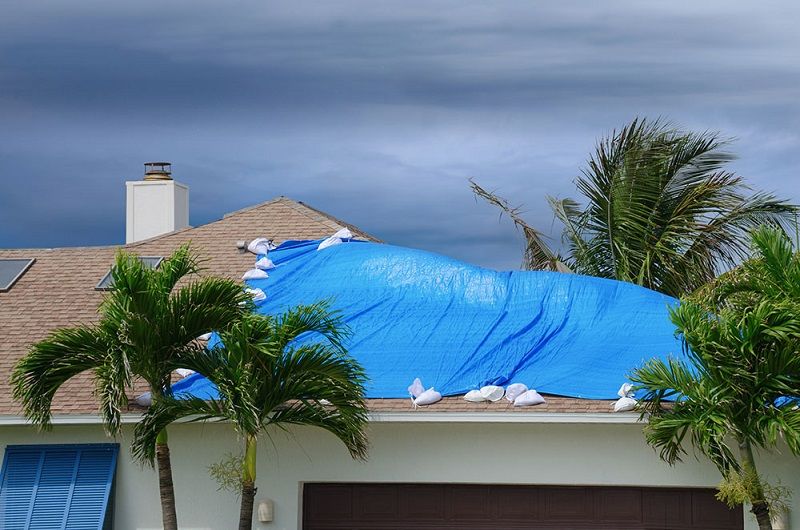Push the free end up and over the leaky section of roof until it extends over the peak and about 4 feet down the other side of the roof.
Putting a tarp on a leaky roof.
Center the tarp over the damaged area.
Unfold the tarp on the roof.
Clear all debris on the roof.
To secure a tarp to your roof.
Measure the dimensions of the tarp to be used.
If you plan on tarping your roof without a professional you should bring.
Lay more 2 by 4s on either side of the tarp and attach those as well for a tight well secured water barrier.
Bring a brush with you onto the roof.
Try to pick a day that is not windy or else you may face frustration.
The 2 by 4 should be about 2 feet longer than the tarp width.
Extend the top edge of the tarp over the ridge of the roof.
If required cut plywood as needed cover up any existing penetrations with plywood secure the perimeter with screws every 6 to 12 into the roof sheathing below preferably into trusses unroll the full tarp make sure that the length extends 1 past the edge of the roof on the damaged side.
Climb on top of the.
Find the source of the leak.
Screw the 2 by 4 directly into the roof to secure it.
A tarp placed over a flat leaking roof can protect the interior of your home from further water damage.
It probably goes without saying but the size of the damage also.
Attach the 1x2s through the tarp and into.
Time to add your furring strips.
Wrap the tarp around the 2 by 4 at least twice.
Get some friends or family to help you.
Wrap the end of side a over a 2 by 4 that is 2 feet wider than the distance between sides b and d.
Installing tarp on a roof without nails 1.
Partially unroll your tarp to cover the damaged area from the roof s eaves to peak.
Grab one corner of the tarp and have a helper grab the other end.
If you have a helper this part is easy.
Unroll the tarp from the.
Bring all of your tools up to the roof.
Sandwich the tarp by nailing a second 2 x 4 board to.
It makes sense to get most of the pieces of wood up on the roof beforehand.
Install a blue tarp on a roof.
Pull away from each other until the tarp is fully unrolled.
Stretch a tarp flat on the roof.
Then fold the excess tarp under a few rotations for a tight clean fit.
There should be an additional 4 feet.
Cut off the unrolled section of tarp with a utility knife.
Find the source of the roof leak.
Positions several 1 2 pieces of lumber on the tarp running vertically down the slope of the roof.
You need to know first which spot on the roof needs tarping up.
Lay the tarp flatly over the damaged area and make sure there are at least 4 feet of it overhanging past the roof s peak and the rest over the eave.

